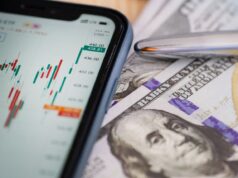In the vast and often tumultuous sea of digital currency, where the currents of innovation and speculation swirl chaotically, lies a landscape ripe with potential yet fraught with peril. The allure of cryptocurrency has captured the imagination of many, promising riches and revolutionizing the very fabric of finance. However, within this vibrant market exist shadows–deceptions that seek to ensnare the unwary trader. Thus, detecting these potential scams becomes not just an exercise in caution but a necessary skill for survival in this evolving space.
Recognizing the signs of fraud in cryptocurrency trading requires a keen eye and a discerning mind. The digital realm is filled with enticing advertisements and persuasive pitches that whisper sweet promises of guaranteed returns. Yet, beneath that glossy veneer often lurks a web of manipulation, designed to exploit human desire for wealth and success. Identifying these possible pitfalls demands both vigilance and an understanding of the underlying mechanisms that drive this market.
As we navigate through the intricacies of cryptocurrency, it is crucial to arm ourselves with knowledge. The signs of scams may be subtle, hidden among legitimate opportunities, but they are not insurmountable. By cultivating a mindset attuned to skepticism and inquiry, traders can better safeguard themselves against those who would deploy deceitful tactics in pursuit of their own gain. In this article, we will delve into the nuances of recognizing potential fraud in the cryptocurrency market, equipping you with the insights needed to traverse this exhilarating yet treacherous terrain.
Common Signs of Crypto Scams
In the vast expanse of the cryptocurrency market, where ambition and innovation intertwine like the roots of ancient trees, there lies a shadowy underbelly populated by potential scams and deceit. Recognizing the signs of fraud in this digital currency landscape requires a keen eye and a discerning mind, for not every gleaming opportunity is what it appears to be. It is within this rich tapestry of trading that the diligent investor must learn to navigate, identifying the subtle deceptions that often masquerade as legitimate ventures.
One of the first indicators of possible scams in the world of crypto is an overwhelming sense of urgency that can engulf potential investors. Promoters may whisper sweet promises of immense returns within impossibly short timeframes, urging individuals to act swiftly or risk missing out on a golden opportunity. Such tactics often mask a deeper intent: to exploit the vulnerabilities inherent in human nature, preying upon hopes and dreams without regard for the repercussions. It is here that the wise trader learns to pause, to reflect, and to engage in measured analysis rather than rushing headlong into uncertainty.
Moreover, detecting inconsistencies within the narrative surrounding a cryptocurrency can reveal much about its legitimacy. The absence of transparency regarding a project’s development team or technological underpinnings should raise alarms for anyone familiar with the fundamental tenets of the digital currency space. If those behind a project are shrouded in anonymity or if their qualifications appear exaggerated, it becomes crucial for investors to question the integrity of such an offering. In this world where trust is both precious and rare, recognizing these red flags can safeguard one’s investments from potential pitfalls.
Furthermore, in the realm of online platforms that facilitate crypto trading, one must be vigilant against the allure of too-good-to-be-true promises. Scammers often utilize sophisticated websites that mimic reputable exchanges or wallets, luring unsuspecting users into their web of deception. These platforms may feature intricate designs and persuasive testimonials, yet upon closer examination, they often lack essential regulatory compliance or customer support structures. Identifying these signs can mean the difference between prosperity and loss; thus, a thoughtful approach to evaluating such platforms is paramount.
In conclusion, as we traverse this ever-evolving digital frontier, it is essential to remain steadfast in our commitment to due diligence and prudent analysis. The cryptographic world holds both boundless opportunities and lurking dangers; recognizing potential scams requires not only awareness but also a deep understanding of human behavior and market dynamics. By honing our skills in identifying fraud and detecting deceptions, we empower ourselves as guardians of our financial futures amidst the unpredictable tides of cryptocurrency trading.
Researching Projects Thoroughly
In the vast expanse of the cryptocurrency market, where dreams and ambitions collide with uncertainty and risk, the importance of thorough research cannot be overstated. Each project, like a seed planted in fertile soil, holds the potential to grow into something magnificent or wither under neglect. As one ventures into this digital currency space, recognizing the signs of authenticity versus deception becomes paramount. A diligent examination of a project’s white paper, team credentials, and community engagement lays the groundwork for discerning the genuine from the fraudulent.
Detecting potential scams requires a keen eye and an unwavering resolve. The allure of quick gains can often cloud judgment, leading many to overlook red flags that are subtly woven into the fabric of misleading ventures. An analysis of tokenomics and the structure of incentives provided can reveal much about the intentions behind a project. If the mechanics seem convoluted or overly complex, it may be time to pause and reflect on whether this is an invitation to prosperity or a trap set for the unwary.
Recognizing signs of scams in crypto trading involves more than just a cursory glance at price charts or social media buzz. The true essence lies in understanding the underlying motivations driving these ventures. Promises that sound too good to be true often mask an underlying fragility; therefore, one must remain vigilant against hyperbolic claims and unsustainable business models. The voices of seasoned traders and analysts can serve as a beacon of wisdom amid the cacophony of speculation that permeates this space.
Identifying possible fraud in the cryptocurrency market is akin to piecing together a puzzle where each fragment reveals a story waiting to be told. The subtleties of communication, whether through forums or direct outreach from project representatives, can provide invaluable insights into their legitimacy. Just as one would inspect the soil before planting a garden, so too must we scrutinize the foundations upon which these digital currencies stand. With care and dedication, we can cultivate a landscape rich in trust and opportunity while guarding against those who would seek to exploit our desires for personal gain.
Red Flags in Investment Opportunities
In the vast and often tumultuous space of cryptocurrency, where fortunes can be made and lost with the stroke of a keyboard, detecting signs of potential fraud requires both vigilance and a discerning eye. The digital currency market, vibrant in its possibilities, is not without its shadows–those lurking deceptions that can ensnare even the most seasoned investors. Identifying these red flags is akin to reading the subtle shifts in the wind before a storm; it demands attention to detail and an understanding of the landscape.
One of the first signs to recognize involves promises that seem too good to be true. In a world where volatility reigns, the allure of guaranteed returns on investments often masks deeper frauds. If an opportunity in crypto trading boasts excessive yields with minimal risk, one should pause and consider the implications. These claims echo through the halls of history, reminding us that what glitters is not always gold but sometimes mere fool’s gold, waiting to deceive those who rush headlong into investment without scrutiny.
The nature of communication within this digital realm also offers clues for identifying scams. Be wary of projects that rely heavily on aggressive marketing tactics rather than transparent information sharing. Genuine endeavors in cryptocurrency will foster open dialogue, providing clear data about their operations and strategies. Conversely, if a platform shrouds its workings in ambiguity or employs high-pressure tactics to rush your decision, it may well be a sign of possible deception lurking beneath its polished surface.
Moreover, recognizing the importance of regulatory compliance cannot be overstated. The cryptocurrency market, while pioneering in its innovation, still operates within frameworks established by financial authorities. Legitimate platforms will adhere to guidelines set forth by these organizations, ensuring that investor protections are paramount. A lack of such compliance often points toward a venture that may be operating outside the bounds of legality–an ominous indicator for those seeking safe havens for their investments.
Another critical aspect to consider lies in the community surrounding a particular currency or project. Healthy ecosystems thrive on constructive feedback and collaboration among users and developers alike. However, when discussions turn hostile or when dissenting voices are silenced, it can signal underlying issues with trustworthiness and integrity. Engaging with communities associated with various cryptocurrencies can provide invaluable insights into their authenticity–or their propensity for deception.
Finally, as we navigate this ever-evolving digital landscape, let us remain steadfast in our commitment to thorough research and prudent decision-making. The signs of scams may be subtle–hidden amid the noise of legitimate opportunities–but they are there for those willing to look closely. By cultivating an awareness of these potential pitfalls and employing a cautious approach to investment in cryptocurrency, we honor not only our financial futures but also the spirit of innovation that drives this remarkable space forward.
Recognizing the Signs of Potential Fraud in Cryptocurrency Trading
In the vast, uncharted waters of the digital currency space, where opportunities shimmer like a mirage, it is imperative to navigate with caution and wisdom. The allure of quick gains can often cloud judgment, leading even the most prudent traders astray. As we traverse this intriguing yet perilous landscape, understanding the possible signs of scams is not merely a skill but a necessity for survival in the cryptocurrency market.
Identifying deceptions within this realm requires a keen eye and a discerning mind. It is not enough to simply engage in trading; one must also be vigilant, recognizing patterns that might indicate fraudulent intentions. In our quest to protect ourselves from fraud, we must become adept at detecting subtle cues that signal potential scams lurking in the shadows.
- Scrutinize Promises: Be wary of guarantees of high returns with little risk; such claims often mask ulterior motives.
- Research Thoroughly: Investigate projects and their teams diligently before investing your hard-earned currency.
- Verify Platforms: Ensure that any exchange or wallet service you use has a transparent history and solid reputation.
- Trust Your Instincts: If something feels off, it probably is. Listen to your intuition when evaluating investment opportunities.
As we conclude this examination of the cryptocurrency market’s intricate tapestry, let us remain ever vigilant. By honing our abilities in recognizing the signs of potential fraud, we create a protective barrier around our investments. The world of digital currency is rife with both promise and peril; thus, equipping ourselves with knowledge becomes our greatest ally against deception. In embracing this challenge with a warm heart and an analytical mind, we can navigate the complexities of crypto trading with confidence and clarity.














